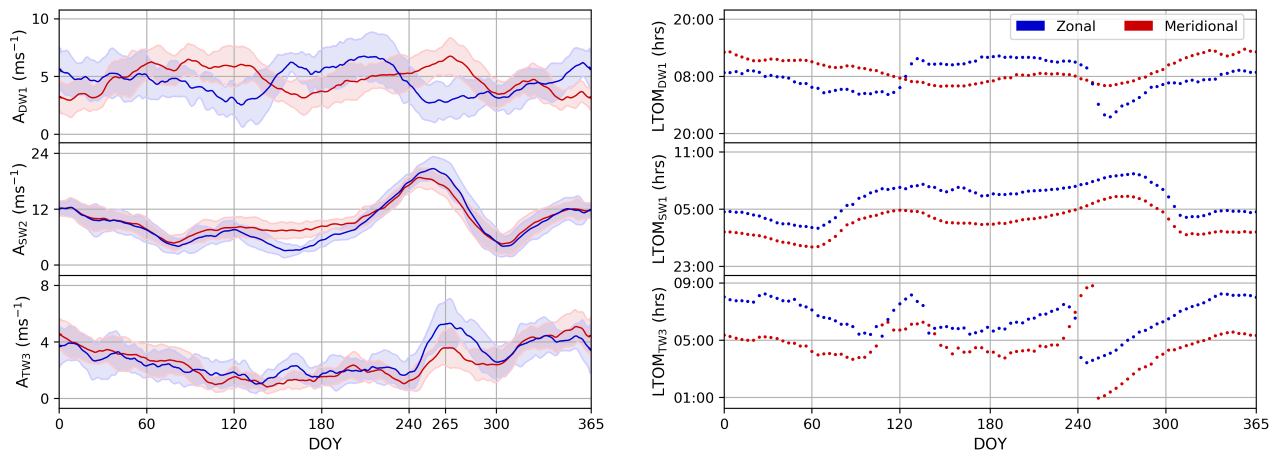The SuperDARN site outside of Saskatoon, Saskatchewan, Canada. Credit: Wikimedia Commons/Drm310
Atmospheric tidal waves are a highly pertinent feature of the higher atmosphere. In the mesosphere and lower thermosphere, atmospheric tides strongly impact the winds and temperatures on (sub-)daily timescales. The migrating tides, which follow the apparent motion of the sun across the sky, are the most prominent tidal waves. These waves are directly tied to the daily insolation cycle, being excited primarily by daily cycle in heating of stratospheric ozone and tropospheric water vapor, as well as by the daily cycle in latent heat release. But owing to their global nature, measuring the migrating tides is difficult.
In a new study [van Caspel et al., 2020] led by Phd Candidate Willem E. van Caspel, meteor echo wind measurements from an array of SuperDARN radars spanning over half the globe have been used to isolate the migrating diurnal (24h), semidiurnal (12h), and terdiurnal (8h) tidal waves.
“In this work, a climatological time series of migrating tide amplitudes and phases is presented based on 16 years of SuperDARN meteor wind measurements. In addition, the tidal measurements are validated using high-altitude data-driven model winds”, van Caspel says. He also highlights the significance of the SuperDARN data: “The SuperDARN meteor wind measurements are uniquely suited for this, in part owing to the record of hourly meteor wind measurements going back as far as 1995”.

The plot above is Figure 4 in [van Caspel et al., 2020], giving climatologies of the amplitude (left panels) and phase (right panels) of the migrating diurnal (DW1, top), semidiurnal (SW2, middle) and terdiurnal (TW3, bottom) tides. The data are based on SuperDARN meridional (red) and zonal (blue) meteor winds between the years 2000 and 2016. Shading marks the standard deviation around the climatological mean.
Willem E. van Caspel also explains that “the measurements presented in this work will serve as a backbone for future observational and modeling studies. For example, to better understand the drivers of natural (tidal) variability in the upper atmosphere, both by disturbances originating from lower atmosphere as well as from space-weather driven effects in the upper atmosphere”.




